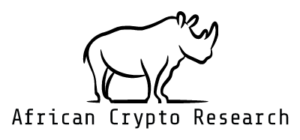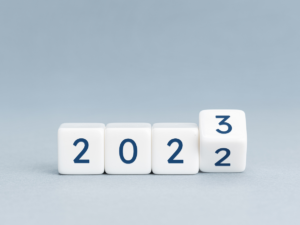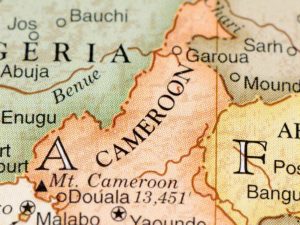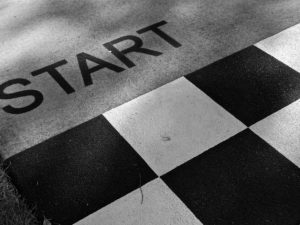Welcome to African Crypto Spotlight. Periodically, we sit down with someone in the African crypto ecosystem and get to know them on a personal level. This month, we sat down with Nigerian NFT creator, Adewale Mayowa. All images included in this article were created by Adewale. You can find the rest of his work and other relevant links here.
SM: Adewale, what’s good?
AM: I feel great. I woke up today to an email from Foundation that someone bid 1 ETH (~$4,300 at publication) on one of my pieces, Curiosity II.
SM: Perfect timing for our interview. I am happy to see that you are doing so well.
AM: Thank you. I have put plans in place and now I’m just moving everything forward according to those plans. I am more focused on my work having an impact, but of course, I still really appreciate the validation from the collectors.
SM: One of the aspects I find so fascinating about your story is that you originally trained to be a medical doctor before turning to art full time. At what stage of your training did you decide to change direction?
AM: The undergraduate part of medical training in Nigeria lasts for 6 years. I left in my final year, at the age of 22. I turn 26 this month.
SM: Wait. How were you in your final year at 22? Did you skip some grades when you were younger?
AM: Yes, I skipped basic 4 and 5 (grade 4 and 5). This meant I started university shortly before I turned 16. Since I was much younger, all the girls were bigger than me!
SM: That’s such a young age to be at university! Ok, so you were pretty advanced in your medical training before you left. How did you end up on the medicine track in the first place? I assume you knew from a young age that you were a good artist?
AM: No, I had no idea. I didn’t know until my final year of training. Also, it wasn’t just me who felt the call of something else while in medicine. I had many classmates who were into music, dancing, photography, poetry, design, acting, fashion and so forth.
It’s because in Nigeria, if you are a science student in high school, the next automatic step for you after leaving high school is to become a doctor, engineer, lawyer or something like that.


SM: I hadn’t realised you got into making art that recently. Tell me more about that journey.
AM: I never really liked school. I have always enjoyed learning things through doing them rather than sitting in a classroom and listening to a lecture. As a child I used to take my toys apart and then put them back together. That felt natural to me.
Every time we had someone come to the house to do something, say a plumber or electrician, I’d always follow them around to see what they were doing. I liked learning things through observing and experimenting.
I used to daydream a lot. I would create movies in my head and other impossible scenarios. Thinking back to that now, I understand that what I was doing in my head back then was actually making art, even though I did not know that’s what it was. I did not know I was an artist yet.
In my final year of training, my friend introduced me to this book called Mastery by Robert Greene.
SM: I have heard about that book. That’s by the 48 Laws of Power guy?
AM: Yes, that’s him. His book really resonated with me. He talks a lot about finding your life’s purpose. And how the pursuit in life should not be money or fame.
Everybody is blessed with specific gifts. Things that we are naturally drawn to. And it is those things that we are supposed to be doing.
To master anything in life, it requires you to apply yourself in that field for hours upon hours. Robert Greene talked about the concept of needing to put in 10,000 hours to be good at anything.
SM: Yes, it’s rough to do 10,000 hours if it’s something you don’t like.
AM: It has to be something that gives you joy and feels natural. Until you are able to find something that gives you joy, you won’t be able to completely apply yourself to an endeavour.
I kept wondering, what are the things that give me joy? I had never really had that level of deep introspection.
I didn’t even know how to draw yet. After my final exam and before my internship, I had a lot of free time on my hands and so I started learning how to draw. I initially picked up the pen because it was easily accessible.
Then my friend who was an established artist told me I should ditch the pen and switch to graphite pencils and charcoal because it’ll be easier for me to make larger drawings faster.
So, I moved to drawing with pencils and charcoal, even though I didn’t completely give up the pen. Another friend inspired me to also pick up photography. Up until that point I had just been taking photographs that looked good for Instagram.
I learnt that there is a whole world of conceptual photography work. During this time, I watched hours upon hours of YouTube videos on drawing techniques and taking photos.
I had been on a 16 week break after my final exam, and then my internship started. Medical internships are full on, but in the little spare time I had, I was still working on sketches and editing photos.
I was fully immersed and could see myself improving in all these areas and evolving. It was that evolution that kept me going and pushing to see how I could make something new. Fast forward to today and here we are.
SM: When you started talking about your journey, you mentioned you didn’t like school that much. But obviously you were good at it. How do you think the education system should be redesigned to be more engaging?
AM: The most important thing is to understand interest and how learning is very self-directed. You can’t force someone to learn anything.
Our current system of grading students using the same exam creates a situation where people who are naturally good at the subjects being tested are judged to be better than people who many not be as gifted in those core smarts. These people are made to feel less than.
Exams only test rote knowledge – the ability to memorise information and then pour out that information. If we are being honest, the way most people approach exams is they cram everything a couple of weeks before the exam and then right after the exam they forget everything they learnt.
So, I think a system that’s focused more on practical learning would be better.
SM: Was it strange for your family to wrap their heads around you transitioning to being a full-time creator?
AM: The move I made is not something that any parent would take well. But sometimes what they feel is the best for you may not be the best for you, because they don’t really know you through and through.
I mean they have life experience, but they don’t know your own subjective experience and things that you can thrive at. It feels good to be a full-time creator. Now I get to draw and shoot all day, and interact with people on Twitter spaces. It doesn’t feel like work.


SM: Ok, so you have explained how you moved into making art. How did you end up making NFTs?
AM: On my Twitter timeline, I saw people mention how they were selling NFTs. I think the first artist I saw do that was Shay the Surrealist, who posted something from Foundation. That piqued my interest, but it remained on the periphery of my consciousness.
Then I kept seeing more and more stuff about NFTs. Another artist that I follow, Victor Mosquera, also mentioned selling something on SuperRare. The more I looked into it, NFTs seemed like an avenue to monetise my work.
For most of the time I was creating, I had been working on pushing myself on Instagram, hoping that it would get to a point where brands would start reaching out to me for collaborations. That was one way I was planning to monetise.
I continued doing my research on NFTs and found that artists were making money while making the type of art they wanted to make. That’s when I knew I had to step into this.
I spoke to Samantha Cavet, and she gave me an invite to Foundation. After that I proceeded to mint my first piece.
SM: What was the first piece you sold?
AM: It was Escape the Noise.
SM: I see on your Foundation page that Cory Van Lew bought it. He illustrated Mike Tyson’s NFT collection right?
AM: Yes that’s him.
SM: Very cool that he was your first collector. What was your next sale?
AM: My next sale was the pen drawing, Ego Death (cover image), for 2.75 ETH.
SM: Impressive. Also, I can’t believe you draw so well with a pen. Are those floating items molecules?
AM: They are abstract shapes. They have evolved over time in my drawing. I like that people see different things when they look at them. Some see molecules, but people see all sorts of things.
Anyways, after this drawing sold for 2.75 ETH, my parents started to understand that ok, maybe there are some prospects to what I’m doing. Until then, it had looked to them as if I was being very stubborn and wasting my life away.
To put things in perspective, what I made on Ego Death is almost double what I made during my medical internship in a year. And I finished that drawing in one month.


SM: It’s crazy just how much greater the NFT money can be once you adjust for purchasing power in certain parts of the world. So, what’s next for you?
AM: Moving forward I want to do a lot more collaborative work with other artists. I also want to start presenting my pieces in person. I know our world is moving more digital but this is something I would like to do. Maybe I could settle for a virtual gallery exhibition.
SM: I have no doubt you will figure it out. Is there anything else you want to share with everyone?
AM: Yes, that I’m single.
SM: Ok, so what’s your situation, are you looking?
AM: No, not looking. I don’t think I have the mental space for a relationship right now.
SM: Right, so why should we advertise that you are single?
AM: Because it still feels nice to be desired.
SM: That’s hilarious. Adewale, thank you for taking the time to share your story. I wish you well and look forward to watching your growth in this space.
AM: Thank you.
For those who wish to connect with Adewale or follow his progress, you can find all his relevant links here.
Previous Spotlights can be found here.






